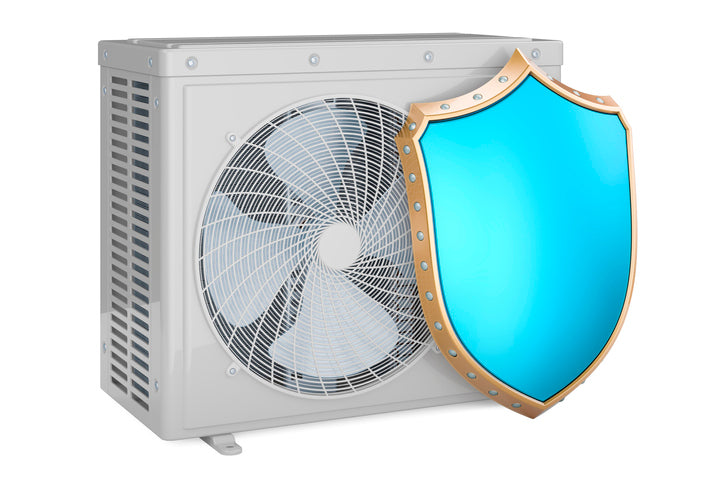Difference Between Commercial and Residential HVAC Systems

Heating, ventilation, and air conditioning systems all deliver the same kind of service: warm air when it’s cold, cool air when it’s hot, and clean air if they include air-purification features. But while they share a single purpose—keeping building interior climates comfortable all year long—there’s a big difference between commercial and residential HVAC systems. The designs, functionality, and maintenance requirements for commercial and residential HVAC systems can widely vary. Here’s a breakdown to explain the differences and why they’re necessary.
Size and Scale
This is probably the most visually obvious difference between the systems.
Residential HVAC systems serve single-family homes and small multi-resident structures. As such, they require smaller and less complex units than commercial buildings need. A residential HVAC system will have a furnace or heat pump, an air conditioning system, and a thermostat to control the temperature. They may or may not have ductwork installed as well. The unit’s power matches the heating and cooling requirements of the home according to square footage, climate, and capacity.
Commercial HVAC systems aren’t so different from a requirements-and-performance perspective, though they usually need to heat or cool structures that are larger than homes. Commercial properties range from retail stores to office spaces to towering downtown skyscrapers. While they still create and disperse cool or warm air, they need to do it at a higher capacity. More space means more power is necessary to deliver heating and cooling loads. It also means more residents require climate control. As a result, commercial HVAC systems often use several units working together to provide coverage throughout the structure.
Configurations
Configuration, or the layout of the different parts of the HVAC system, is another big difference between commercial and residential HVAC systems.
Residential HVAC systems have extremely basic setups. Most residences employ HVAC split systems. A split system usually incorporates an outdoor compressor and condenser unit, while an indoor unit consists of an evaporator coil and air handler. Refrigerant lines connect residential HVAC systems, and ductwork often runs throughout the structure. Residential HVAC systems’ simpler setups make them much easier to install, repair, and maintain.
Commercial HVAC systems, as you might expect, are more complex. Commercial spaces may require different levels of climate control for different levels and spaces. More advanced technology is apt to turn up in such systems as well. Variable refrigerant flow allows for the creation of different climate zones in a building and greater energy efficiency. Unlike residences, which set up condensers and compressors outside, usually alongside the building, commercial HVAC systems may require the installation of rooftop units. Commercial HVAC units may also require multiple technicians to install, maintain, and repair. This brings us to the next point.

Installation and Maintenance
Residential HVAC systems are easy to install in a relatively short window of time by one or two technicians. The main part of the unit may be in a basement, attic, or closet. The job may take slightly longer if ductwork is necessary. But even then, it’s a straightforward task. Regular maintenance is often the homeowner’s responsibility. It involves filter cleaning or replacement, though some tasks, such as cleaning the internal coils and the ductwork, are best left to professionals. Still, maintenance is generally simple and possible to accomplish in a short time, extending the system’s working life.
Commercial HVAC systems require a greater degree of planning and preparation when it comes to installation and maintenance. Installation, whether it occurs during construction or after, may take weeks or months to accomplish. In the case of post-construction installation, the process may require extensive integration with previous HVAC or ductwork setups and the building’s electrical system. Maintenance likewise requires a greater time investment and multiple technicians. Inspections and maintenance may need to occur more often, and extensive recalibration and repairs can impose downtime on the building’s residents.
Energy Efficiency and Power Costs
Both homeowners and commercial space owners are looking for HVAC systems that run quietly and efficiently while saving money on utility bills.
Residential HVAC systems have energy-efficient designs these days. Common features in residential HVAC systems include variable-speed motors that run smoothly and reduce wear and tear on the rest of the system. Programmable thermostats, of course, allow the homeowner to set the temperature high or low for as long as needed or only at certain times, saving energy. Smart thermostats can also monitor energy usage and adjust the systems output to ensure comfort without wasting resources.
Commercial HVAC systems, as can be expected, use much more energy than the average household. Because of this, they must have the equipment to provide enough climate control without burning through too much electricity. Variable air volume systems, energy recovery ventilators, and advanced control systems are just a few elements in commercial systems that demand greater control over a larger space. They produce the most effective climate control with the least expenditure of resources. This can make all the difference to a business’s bottom line.

Environmental Impact
Going green with an HVAC system isn’t just good for the environment; it’s ideal for the home or property owner as well.
Most residential HVAC systems’ effect on the ecosystem has to do with their energy-efficiency level and the type of refrigerant they use. The US Department of Energy (DOE) sets minimum efficiency standards for HVAC systems. It’s possible to measure efficiency with SEER, or seasonal energy efficiency ratio. The higher the SEER, the less energy your air conditioning unit requires to produce the same amount of cooling air. As for refrigerants, most systems use brands with a lower global warming potential (GWP). Regular maintenance can also help an HVAC system do less environmental damage.
Commercial HVAC systems, as expected, are much larger, work harder, and have a greater impact on the ecosystem. Fortunately, technology has kept pace, and many commercial units use lower GWP refrigerants, consume energy more efficiently, and employ sustainable design in their placement.
Those are the basic differences between commercial and residential HVAC systems. If you're interested in learning more about HVAC systems or need professional advice, contact us today for a consultation. We can offer solutions that address the above concerns and more!






